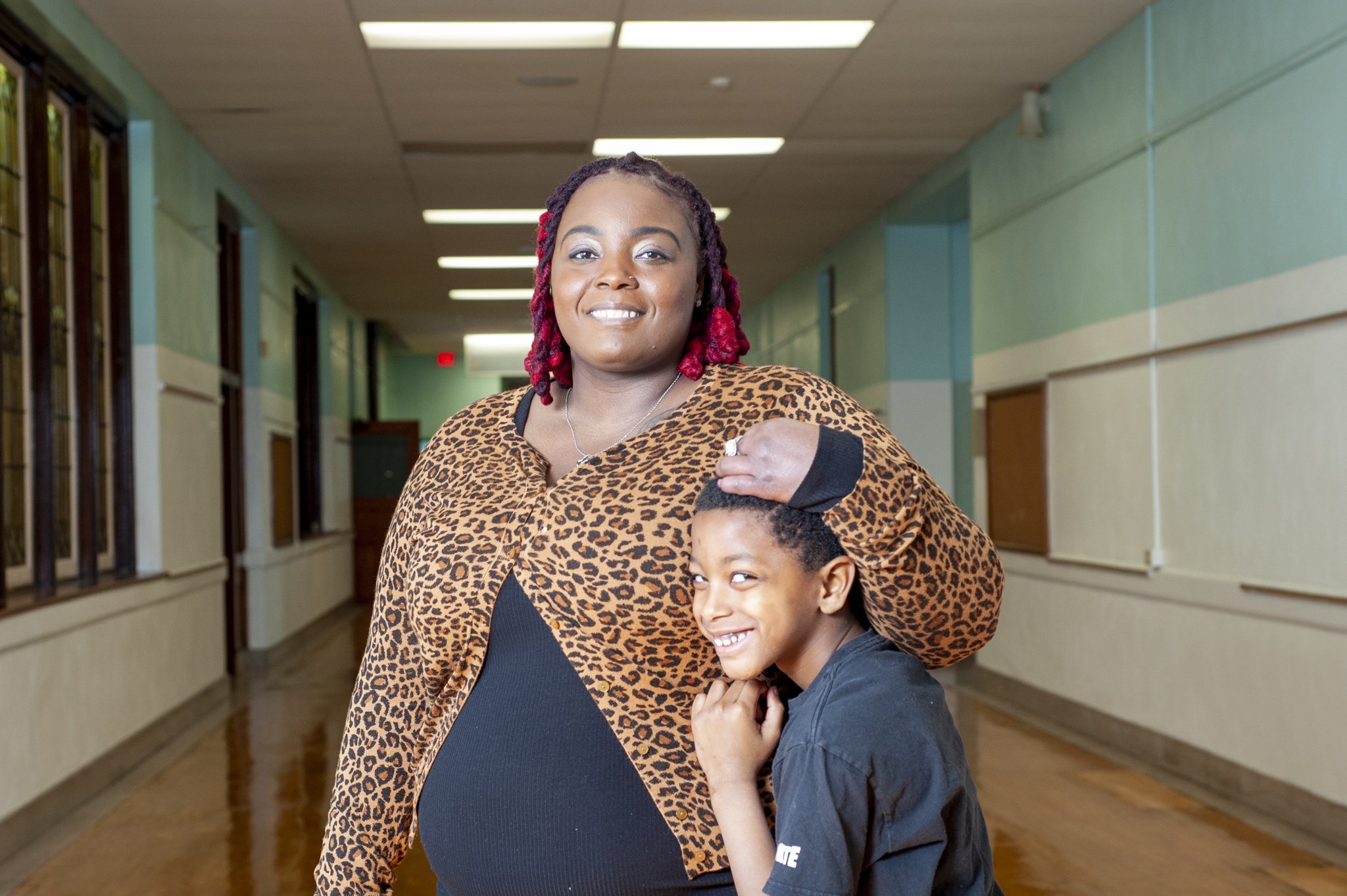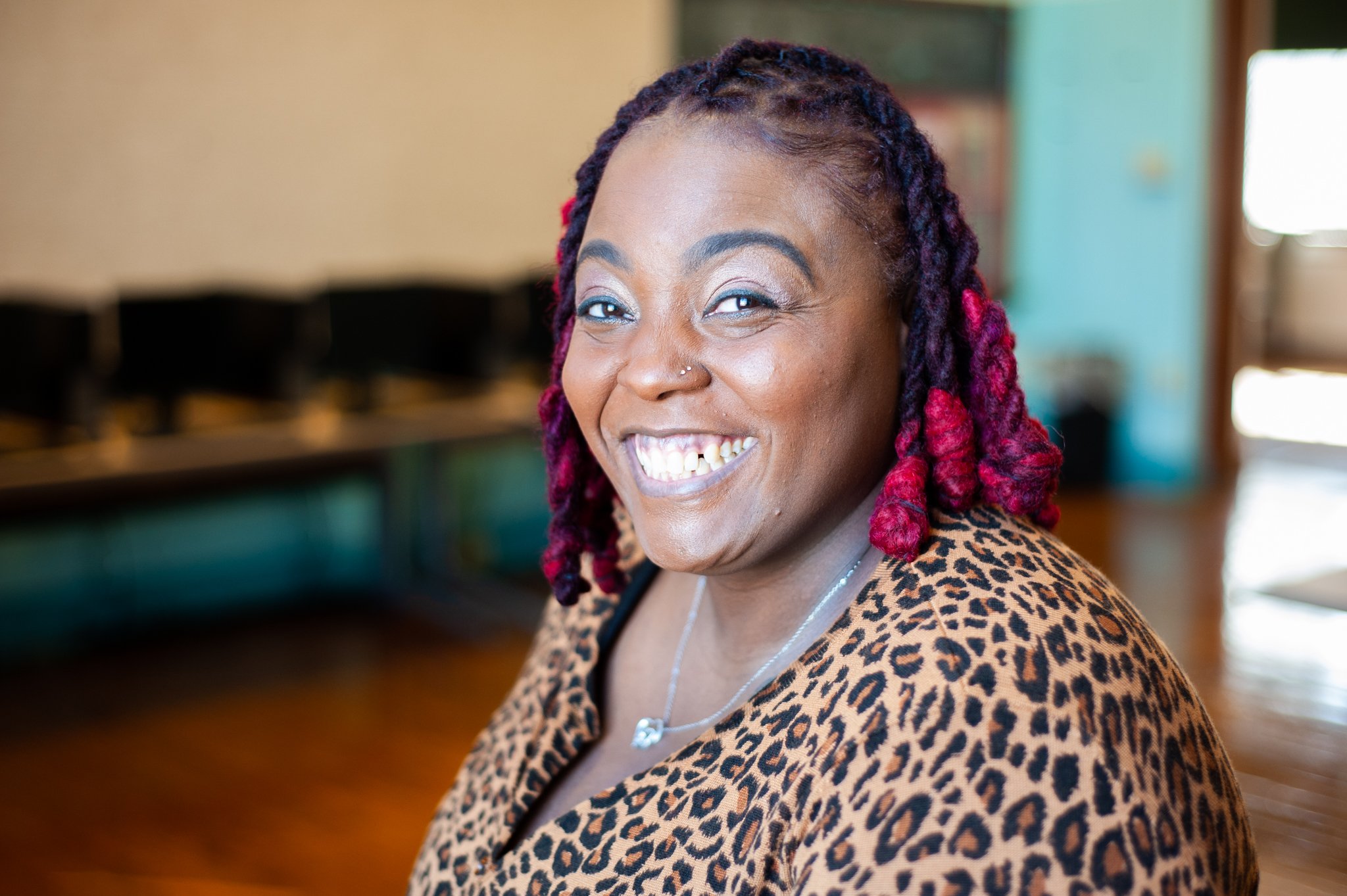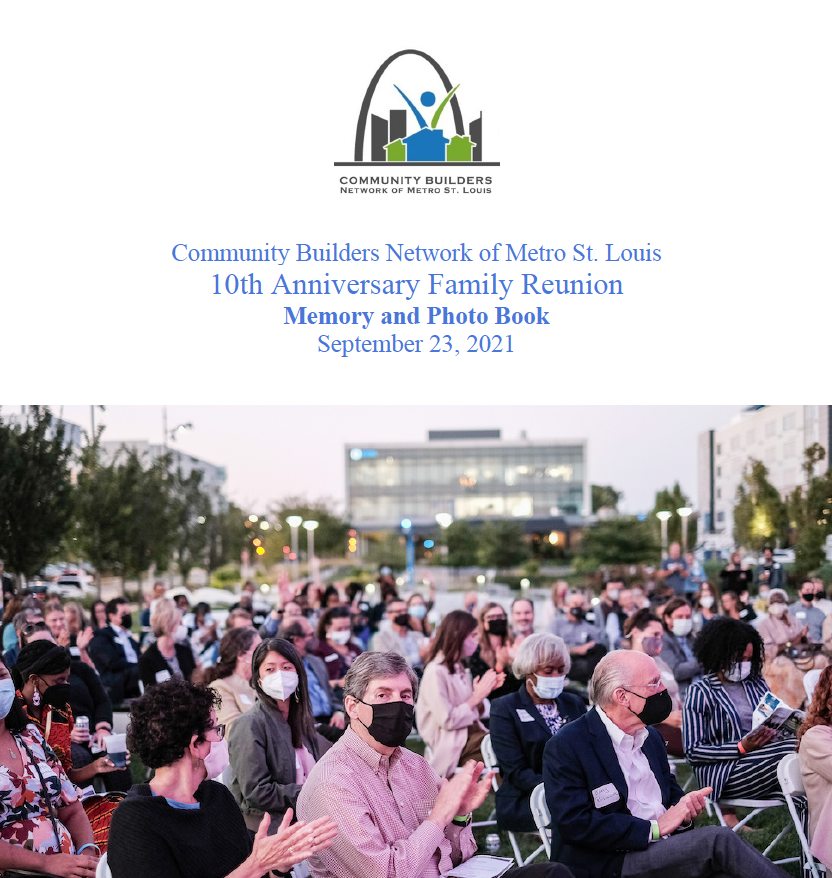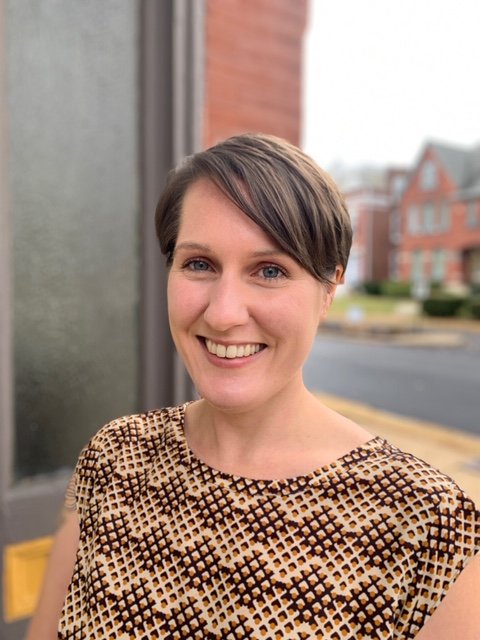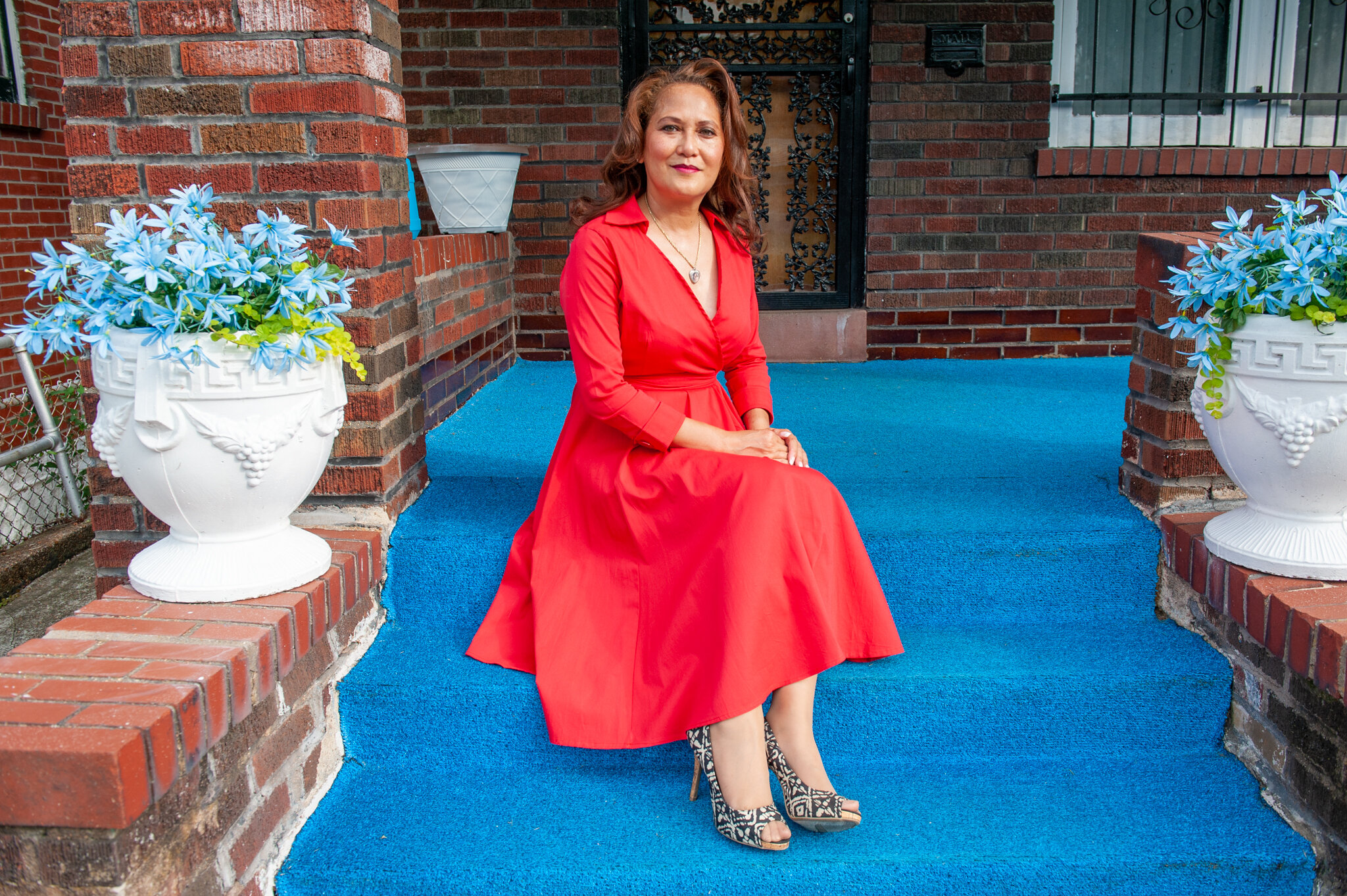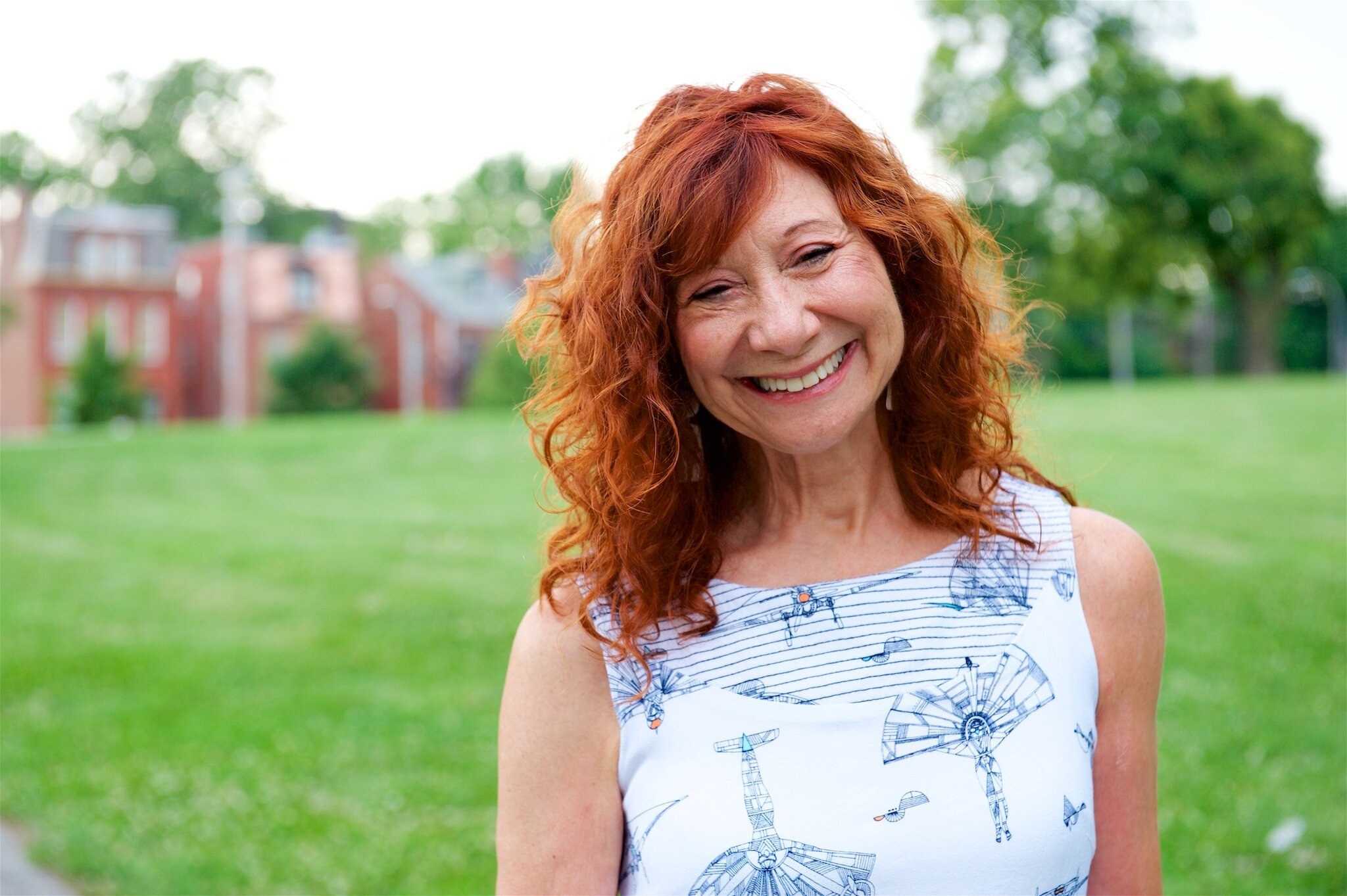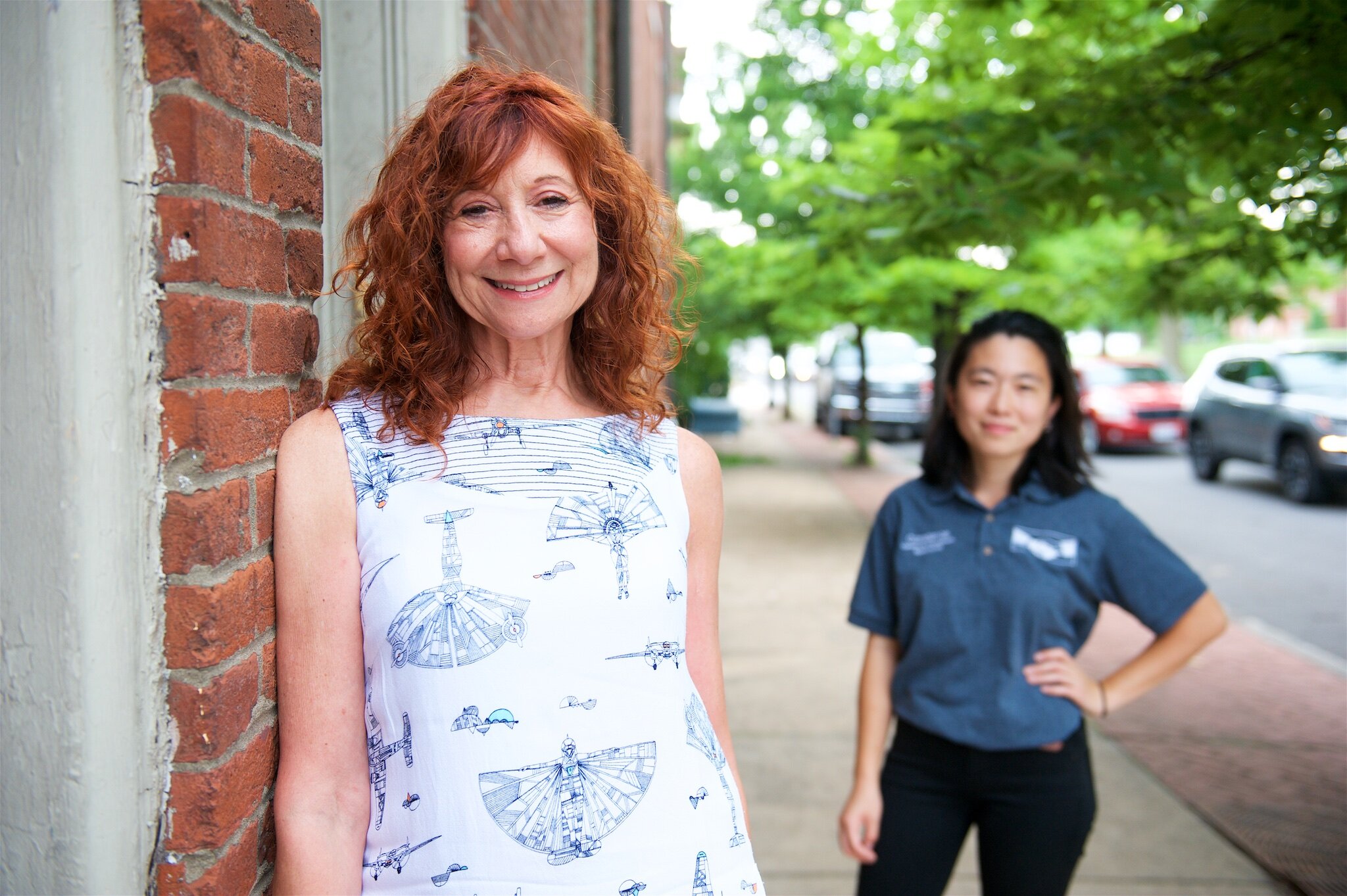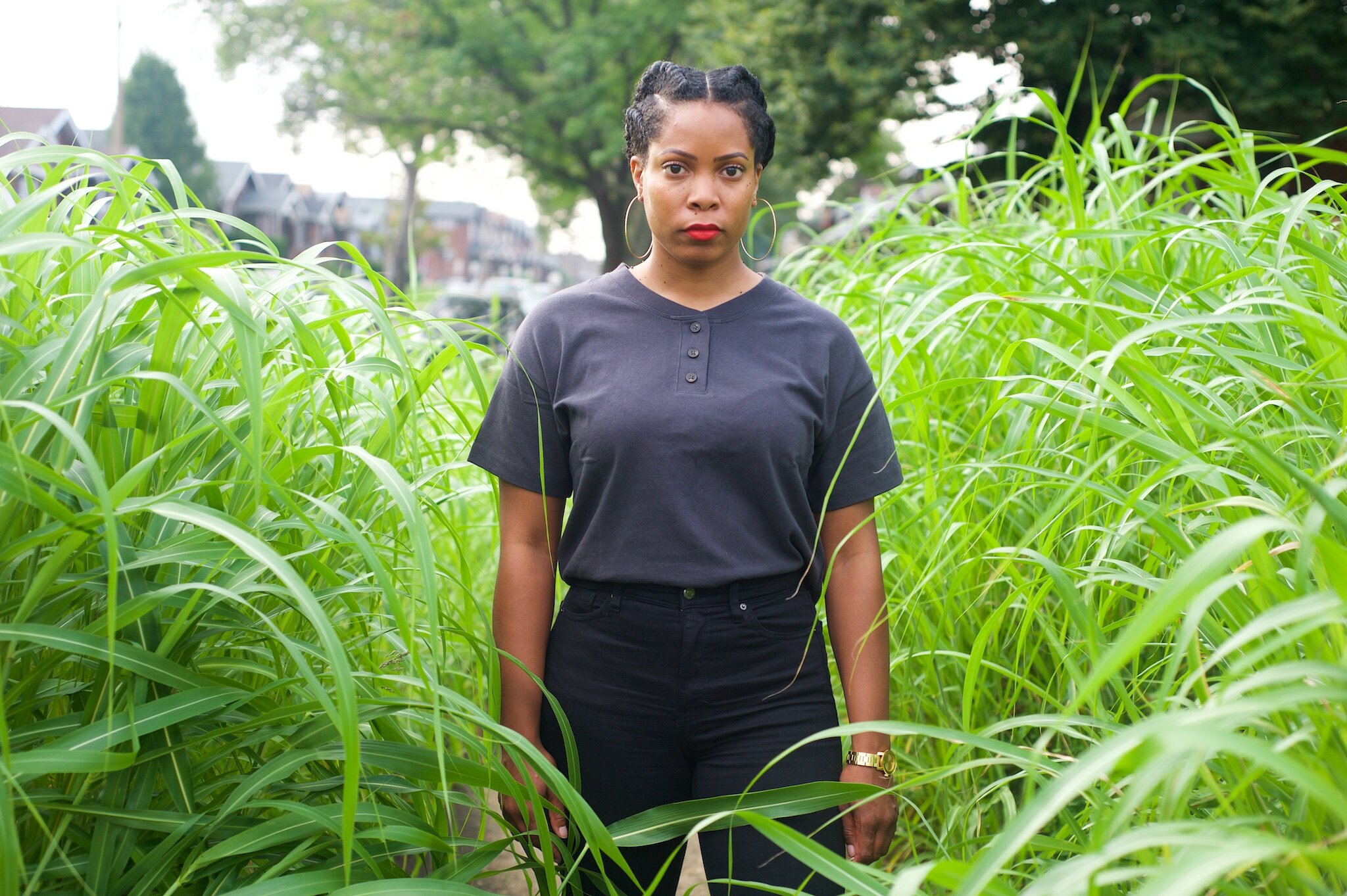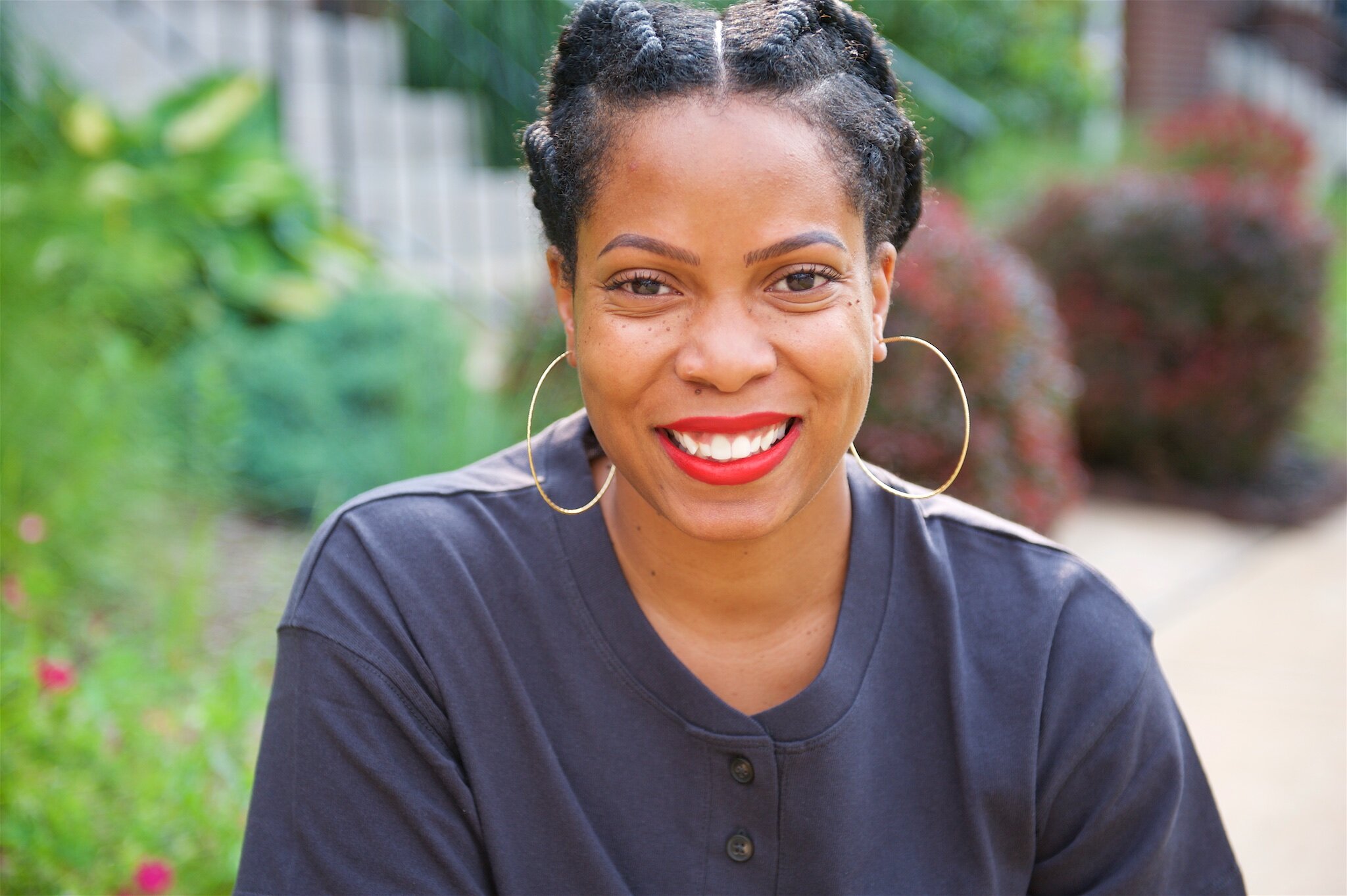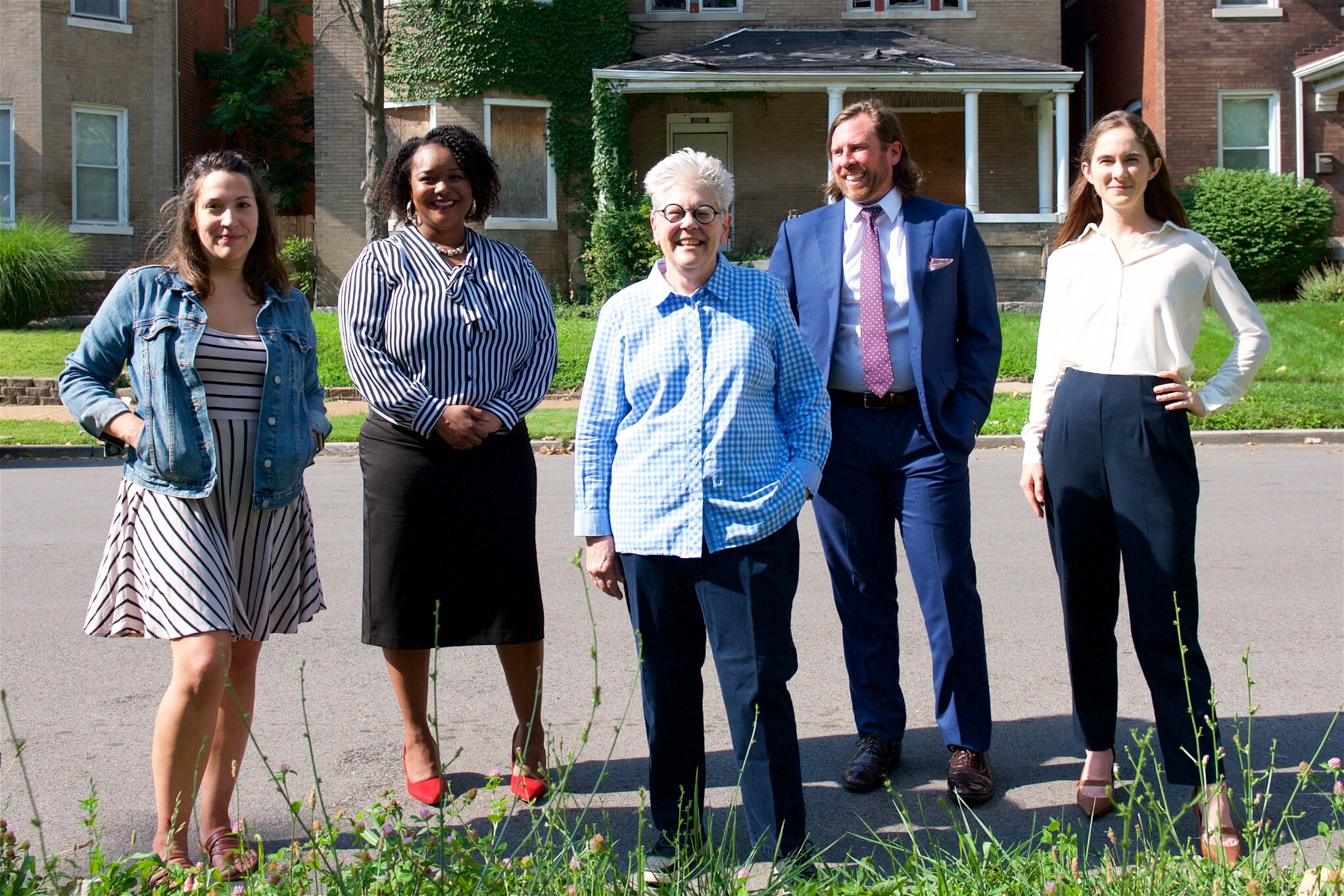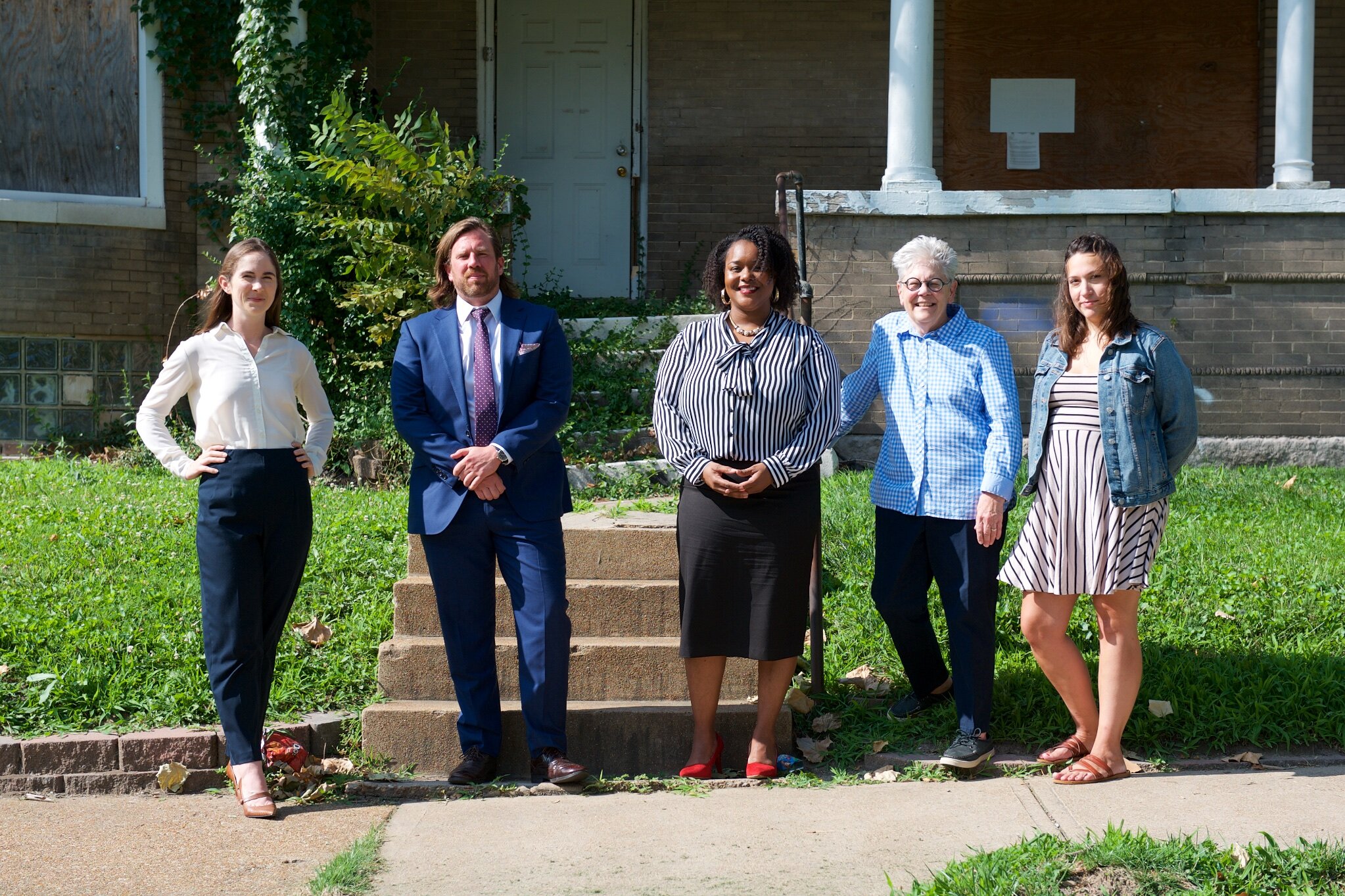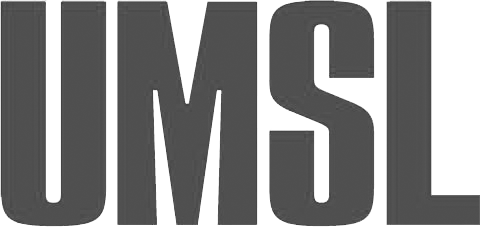Congratulations to LaVonda Henderson, Director of LinkSTL Inc., recipient of our 2023 Rising Star in Community Building Award!
The Rising Star in Community Building Award recognizes a person who:
Demonstrates strong dedication to and passion for community building work.
Exhibits leadership, vision, and a commitment to action and results.
Shows promising potential to catalyze outstanding impact in community building policy, investment, and/or community change.
Works to challenge the status quo in the St. Louis region.
Humans of St. Louis storyteller Lindy Drew met with LaVonda to learn more about her and her work. Here’s some of what LaVonda had to say.
I reached out to my grandmother who was part of Communities First-STL. And I was like, “Linda…” (Yes, I call her Linda). “I want to mentor these kids. I want to be that parent or that person who’s missing from their lives. I want to give back and be there for them.” She said, “I want you to meet these ladies whose office is next door.” That’s how I started volunteering for LinkStL. I told myself, “I can see myself doing this. I would love to do this.” The organization began with Michelle Duffe, a property developer in Hyde Park, and Timetria Murphy-Watson, the first director, when they wanted to bring resources to residents, and especially to youth, in this small pocket of town. It seems like everyone overlooks Hyde Park.
Well, I was learning the ropes when the following year they said, “We want you to sign up as an AmeriCorps VISTA for Links.” I was like, “What is that? I’m not going into no Army!” But now I know it’s this wonderful program where if you ever want to try to do a job but you’re afraid to do it, this is where you need to go. It’s a fun type of Army, I guess you could say. It’s a cohort of folks who get together, volunteer, and fight for the same cause, which is understanding and beating poverty. So I got a stipend and worked there for about two years.
Then they were like, “We really like you. We want you to stay.” So they came up with a budget and kept me on as staff working on programming and outreach. Well, it got to a point when people would come in and ask, “Where’s LaVonda?” The director would introduce herself and say, “What’s up? What you need?” And they’d be like, “No, I need to talk to LaVonda. Where’s LaVonda? Tell her to call me.” I was like, “Why they always coming for me?” But I was their ear. And it would get so personal. When I talked to them, I’d tell ’em, “You trippin’. Get it together. We’re gonna come up with three steps, work on those steps, and you’re gonna move on from there.” They’d leave the office or get off the phone and then get themselves together. Some called me all night long and I had to be like, “Look, I have a life.” But, I had answers for what they were going through.
When I see the finished results of a project or a smile on a family’s face or the thank yous from late-night calls, that’s what warms me up. Our motto at LinkStL is, “Linking people to possibilities.” Think about the word link and how many ways it can be used and that’s everything we do. We’re that piece that always starts that chain, that gate, that well, that map.
I run into families with a lack of resources or lack of education and when I try to tell them how or when to do something, I’m fighting the system and it’s like I’m fighting them too because they’re so prideful to let somebody know they need help. I tell them, “When I sign you up for this program and send you over to these people, I need you to pack that attitude in the car, go in, and let them know how much you need, when you need it, what you need, and how much you need it. Don’t just tell them your lights are getting cut off and you need help turning them back on. They can’t help you if you’re telling half of your story. No. Tell them, ‘My lights are getting cut off because I just lost my job. I’m a single parent of four kids. I catch the bus everywhere I go. I don’t know how I’m getting my next job.’ Tell them exactly what’s wrong and I guarantee you they’re gonna help you with the most present need in your life.”
I’ve sent folks to programs that have been able to get them cars to get them to good jobs and they got on their feet and got the things their kids needed. I was able to help families sign up for 100 Neediest to get things for their households. One family whose house caught on fire lost everything. The mother had three kids and just had another baby. She was so amazed, she couldn’t believe someone she didn’t know gave her so much support. I was in awe, too. In this program, you can get a check and get adopted or get a check and not get adopted. She got both. Her check was like $1,500. I was like, “Girrrrl! You’re buyin’ me lunch, right?” Then she went through all the gifts for each child and over $500 worth of gift cards. She kept saying, “Thank you.” I told her, “Don’t thank me. Figure out a way to thank them.”
Xavier and his family are part of the reason why LinkStl got on the map. He stayed up on 14th Street with his mom, dad, and sisters. That was one of my little babies. He meant so much to me. One day when he left our office, he was shot after getting his hair braided. Well, I also stay in this neighborhood. And when I got that phone call, I got in the car and just ran. I was like, “Where is he?” I went to the hospital and he was gone. His sisters still call me or pop up out of the blue, like, “Where you at? What you doin’? Miss LaVonda, we need our hair braided.” I have a cousin who does hair, so every school year they braid their hair. But that little baby made me want to try to help figure out how to help these little kids in my neighborhood here. See, he was shot by two young men by accident because they were shooting at each other. I grew up around gang violence. I knew a bunch of gang members and reform members. And if they were shooting, it was in the wee hours of nighttime when everybody was in the house. So what happened to Xavier kinda pissed me off and it really hurt me. He was my youngest son’s first friend. And my son couldn’t understand that he was never gonna see this boy again.
When people refer to neighborhood and community, I think about when I was a kid and grew up on Fair and West Florissant. I couldn’t go acting a fool down the street because Miss Taylor and all those other folks in the neighborhood would call my grandma. We grew up knowing everybody and knowing we were safe. So I always want to bring that concept back to where I live now. My grandmother, Linda, was really involved in the community back then. Team Sweep was an organization that used to go to different neighborhoods and bring supplies to help keep them clean. Every Saturday morning, there were 20 or 30 of us dressed in these bright green shirts, cleaning up and getting made fun of by gang members and other little kids. But, when that yellow bus pulled up Friday night to take us to the baseball game, all those kids were ready to join.
When people refer to neighborhood and community, I think about when I was a kid and grew up on Fair and West Florissant. I couldn’t go acting a fool down the street because Miss Taylor and all those other folks in the neighborhood would call my grandma. We grew up knowing everybody and knowing we were safe. So I always want to bring that concept back to where I live now. My grandmother, Linda, was really involved in the community back then. Team Sweep was an organization that used to go to different neighborhoods and bring supplies to help keep them clean. Every Saturday morning, there were 20 or 30 of us dressed in these bright green shirts, cleaning up and getting made fun of by gang members and other little kids. But, when that yellow bus pulled up Friday night to take us to the baseball game, all those kids were ready to join.
So because my grandmother signed me up for that as a kid, I understood what it meant to keep the community clean and why it’s important. She also made me mentor the younger kids, so I knew what it was like to have someone to look up to. She was part of a political party, so I used to go canvas at 12 years old, advocating for people. She used to put us in youth job programs, so my first job as a freshman in high school was as a librarian, shelving books and marking old books they were going to sell at the book sale at the end of the year. After that, I worked at Care Optical helping folks try on eyeglasses and putting their contacts in and I loved it. I loved being around my people, working, and just having fun. So if it wasn’t for my grandmother, Linda Primer, and all her mess, I would not be here.
I really do love what I do. I enjoy it every day. And when I do get youth to work with me from St. Louis Jobs Board or SLATE, I’m on ’em but I’m not on ’em. And I’m not on ’em because they should be having a little fun. I teach them how to work in community, how to be the face, and how to be held responsible for other people in life.
Since I’ve been asked to be the director at LinkStL, and I accepted, my vision with my board members’ support is to work around youth. And when you work around youth, you get the families, because the kids go home braggin’ about how much fun they’re having. They talk about how I corrected them on such and such behavior and then the parents come to me saying, “They told me about that. How can I get help for this and this, too?” That’s how you then bring in the families, get to know them, and learn how to better serve them.
That said, LinkStL has been open for eight years and we’ve had some form of a summer camp for seven. Last summer, we decided to have a camp from the last week of school until the first week of school from 7:30 in the morning to 5:30 in the evening. I got 65 kids enrolled. But on a typical day, we had 30 to 45 kids. And I learned all these different behaviors and feelings a child could have. I already knew they were little, itty-bitty grown people. But I started seeing how much things at home really affect these kids.
Parents tell me all the time, “They don’t know what I go through!” And I say, “Yeah, but do you know what they are going through?” Hey, I say it as a parent as well. I tell them, “I yell. I fuss. I scream. I cuss. But do you know whatever you’re goin’ through, your kids are going through it, too? They just don’t know how to say it. They might not know what the word ‘struggle’ means, they just know Mommy’s mad.”
Monday through Friday, kids came in for summer camp. They had breakfast, we did self-meditation and stretching, they’d run around and play. And by 9 o’clock, it was time to start the curriculum. It could be tutoring in reading and math, art, or speech and debate. We offered cooking, dance, photography, self-reflection poetry, and yoga. They loved going swimming at The Y twice a week. The kids loved that the bird sanctuary came out with all types of birds. The kids were like, “So these birds just gonna poop all over the floor or what?” I was like, “They don’t have a bathroom like us. This is the bathroom!” Everybody was like, “Well, I’m not gonna clean it up.” The man who visited was like, “It’s alright. I got wipes.” We had Mad Science come out to do all types of wild experiments. We had a chef come who didn’t just teach the kids recipes, he taught kitchen safety and the kids had to pass a kitchen safety class before they could start cooking. So funny. So cute. And they all got certificates of completion.
I was in charge of the crafts, so one day the kids made fluffy, fairy flip-flops. I thought only the girls would want to, but the boys wanted to make pairs for their sisters and their mamas. They just loved to participate. Then when we started with the beads, they made bracelets, too. But craft time wasn’t just to share how they could do something on their own or take an old pair of raggedy jeans and turn them into something new. It was a time when we conversed. We talked about what was goin’ on with them. We sang songs. We were goofy. It was a different way to sneak therapy in to get them to open up and all talk. We’d have tons of conversations. And it would change their mindset even in the way they talked to each other.
I also got donations of books, toys, and snacks, so we created a store inside the camp. The kids were able to win and lose money, which went into another curriculum we got funding for about financial literacy. So I was the banker, I had this bank book, and they would deposit and take out money. They each had a pencil folder to keep their money and checks in there. When they went to the store, prices were ridiculous for a pencil, but the concept was, “Do you really need this item or do you need something else?” At the end of camp, there was so much left over, I let everyone have some items for free and purchase whatever they had left in their bank accounts. They went home with so many goodies: shoes, pants, soap, lip gloss, sanitizer, books, calendars, and art supplies.
And what did you get out of it?
Headaches. Tears. Plenty of lupus flare-ups! I was here from 7 AM to 6 PM every single day. I ran myself ragged. But, you can love on somebody else’s child just as much as you love on yours. What you do will reflect on how another person lives. I got relationships and bonds that I can have forever.
LinkStL has a staff of one. And that’s me. So if I can have two or three more people working here, our work will get out a lot more and be even more phenomenal. We’re in need of supplies and funding now for after-school and summer camps. The parents of our kids donate, but they’re also wondering, “What else can we do? Who can we talk to? Do we need to knock on the mayor’s office? We like what this organization does and it’s not like anywhere else.” Maybe their kids have programming at their schools, but these parents keep choosing to support us. They wanna advocate for us. My crazy self doin’ something right. With more funding, I’d have someone doing programming or grant writing. This job experience has been such a learning curve for me and developed me as a director. What I’ve learned here, you can’t just learn in the classroom. You have to be hands-on. We’re still involved in annual family events, like Spooktakular, Thanksgiving, and Christmas. And we’re building out our after-school and summer camp. We want it to get to the point where it’s like, “Sorry, we don’t have enough room.”
The old me was afraid and lost. I knew I wanted to do something, but I didn’t know what. The new me, I’m not afraid. I’m not afraid to approach somebody and ask for help, to say, “I need this. My kids need this.” I have changed tremendously from who I was, personally and professionally. We hear the saying, “Treat people how you want to be treated.” I always expect them to treat me the same way, but then I’d get upset when they didn’t. My grandmother, Linda, told me, “God sees what you do.” So I continue to treat people how I want to be treated. Maybe they’re not gonna give it back to you, but He is. And I’ve been able to give my kids opportunities I couldn’t before. I’m able to see my role in life and understand it more, and not feel like, “Why the hell am I here? What am I doing this for?” I’m not a kid anymore. I’m here for every kid that don’t have anybody to fight for them.
Your support does not always have to be in dollars. It would be wonderful if it was because then we can do what we need to do. But your support in advocating or telling our story or coming to volunteer or dropping off a few bags of groceries helps. The kids are happy when they’re able to have a hot meal or have a hot meal catered or have something other than a sandwich. And when they’re fed better, they act better. How are you when you’re hungry? Evil. Grumpy. Mad. Can’t think. Can’t concentrate. So that’s what I’ve also learned.
What is a tremendous need that would help you along with what you’re doing and trying to accomplish?
The big fat “F-word.” Funding! That’s the only problem I have. Because if I had the proper funding, I would have staff members all year round. The kids would get those familiar faces. The kids already get that from me. They know where I live. They’ll say, “Miss LaVonda, I saw you go in the house last night.” And I’ll say, “Well, did you make sure I got in safe?”
— Lavonda Henderson, Director of LinkStL Inc.







